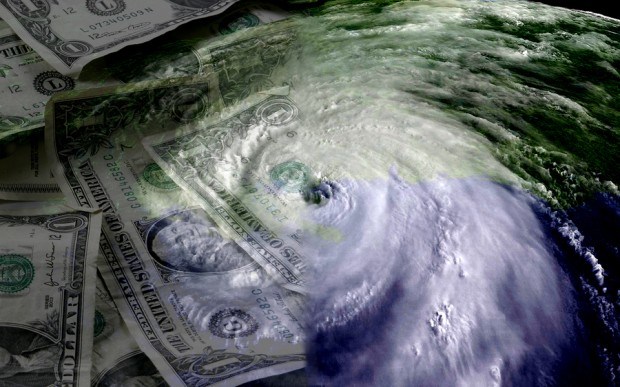Mexico’s natural disaster fund may be $100 million better off at bondholders’ expense after Hurricane Patricia appeared to trigger a catastrophe bond the country sold in 2012.
Investors in those notes maturing Dec. 4. are waiting for a verdict on whether they will get all, half or none of their money back after the storm, which was the biggest ever recorded in the Americas. The Mexican bonds would be triggered in full if the atmospheric pressure at the center of the storm were below 920 millibars.
“The question is whether the 920 level will be breached or not,” said Tim van Duren, a product manager for insurance-linked securities at Schroders Plc in Zurich.
On Friday morning, before the storm made landfall, it had a record low minimum central pressure of 880 millibars, according to the National Hurricane Center’s preliminary report. By the time it made landfall in late afternoon, the pressure had risen to 920 millibars and it continued to increase from there as the storm fizzled.
Schroders has an insurance-linked bond fund advised by Swiss risk consultancy Secquaero Advisors AG. They sold their stake in the Mexican Pacific-Coast bonds earlier this year because of the increased likelihood of hurricanes in an El Nino year, Van Duren said.
Between 1949 and 2004 only two storms would have been big enough to have triggered the notes, Standard & Poor’s wrote in 2012 when the bonds were sold, citing bond calculation agent AIR Worldwide. Boston-based AIR will now have to decide if the bonds will pay out or not. The debt will continue to pay a coupon while the storm is evaluated.
The beneficiary of the bonds is Fonden, Mexico’s disaster fund, via Agroasemex SA, a state-owned agricultural insurer, S&P wrote.





















 Surge of Supercharged Hurricanes Prompt Call for Cat 6 Classification
Surge of Supercharged Hurricanes Prompt Call for Cat 6 Classification  Berkshire Hathaway Enters Post-Buffett Era as Share Prices Fall
Berkshire Hathaway Enters Post-Buffett Era as Share Prices Fall  Artificial Intelligence Is Rewriting the Rules for Commercial Lines
Artificial Intelligence Is Rewriting the Rules for Commercial Lines  Slideshow: Carrier Management’s 2025 Top Editor’s Picks (Unlocked)
Slideshow: Carrier Management’s 2025 Top Editor’s Picks (Unlocked) 

